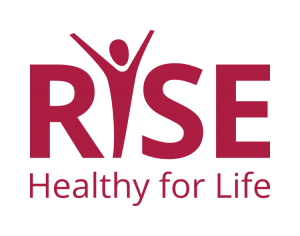What is comprehensive sex education (CSE)? Join us to learn the components of CSE, why it’s important, and how it can benefit your students and your school. We will also discuss the process for getting approval from your school board and how GCAPP staff can support you.
Training Hub
The Sex Education Collaborative Training Hub lists trainings for sex educators, facilitators, and other professionals on best practices for sharing important information with clients and the public. From teaching anatomy inclusively to effectively addressing bias in the classroom to addressing racial justice and equity in sex education, the Training Hub includes trainings, technical assistance, and policy support from state, regional, and national leaders in the field of sex education.
Please note: The Training Hub includes both in-person and online professional trainings. If you see a training you are interested in and it isn’t listed as virtual, please reach out directly to any of our members to find out what's possible!
Trainings Offered by State-Based and National Organizations
Displaying results 46 - 50 of 154CSE 101
- Indicator 1 (K-12): Describe three health (e.g. physical, social and/or emotional) and/or academic benefits of sex education for young people
- Indicator 2 (K-12): Describe state and/or district laws, policies, and standards that relate to sex education where one teaches.
Barriers to Abortion Access for Michigan Minors
Unplanned pregnancies are challenging for any population, but particularly for adolescents. When dealing with issues like pregnancy and abortion, teens are often denied the tools to make informed and autonomous decisions. This training will work with participants to identify and set aside individual judgments in order to provide unbiased support to pregnant adolescents. The training will also cover mandatory parental involvement laws, judicial bypass, and how to help minors navigate the judicial bypass system.
In this training, participants will:
- Identify own biases around abortion and teen pregnancy.
- Gain an understanding of unique barriers teens face to access abortion services.
- Define and review parental involvement laws and judicial bypass.
- Define requirements for judicial bypass.
- Describe the judicial bypass process.
- Discuss findings from MOASH's Michigan Youth (MY) Rights project.
- Indicator 1 (K-12): Describe three health (e.g. physical, social and/or emotional) and/or academic benefits of sex education for young people
- Indicator 2 (K-12): Describe state and/or district laws, policies, and standards that relate to sex education where one teaches.
- Indicator 1 (K-12): Explain the differences between personal and universal values relating to sexuality.
Sexual Violence 101
This training is a brief overview of various forms of sexual violence, including rape, sexual harassment, and stalking, in addition to the importance of consent. We will discuss SB401 and look at how that has impacted sexual violence prevention education in schools. We will review curriculum options and programs for addressing this mandate.
- Indicator 4 (K-12): Explain the roles and responsibilities of a mandated reporter.
- Indicator 5 (K-12): Explain the state- and district-mandated reporting requirements and procedures.
Building Self-Esteem and Body Confidence
After this workshop, participants will be able to explain appearance ideals that students encounter and where pressure to achieve them comes from.
This training is designed for:
- Teachers
- Substitute Teachers
- Counselors
- Coaches
- Parents
- Clergy
- Community Workers
- Educators
- Indicator 1 (K-12): Describe three distinguishing characteristics between healthy and unhealthy relationships, involving family, friends, and/or romantic partners.
- Indicator 1 (K-12): Describe how puberty prepares the human body for the potential to reproduce.
- Indicator 2 (K-12): List three physical, three social, and three emotional changes that occur during puberty.
- Indicator 3 (K-12): Identify three practices that students can adopt for maintaining healthy habits beginning during puberty.
EASE Training
This training is designed to help people develop the skills to teach sex education to people with intellectual and developmental disabilities. It covers adapting materials for all learners, investigating your own values and biases, and can include information on how to deliver our EASE Curriculum. This training can be delivered in-person and virtually, either live or asynchronously.
By attending training with RSEI, participants also gain access to members-only content on our website, as well as up to 10 office hours sessions for 1:1 support from an RSEI educator. Learn more about the support services we offer here(link is external).
RSEI is committed to providing affordable professional development for our communities. If the cost is prohibitive, please fill out our scholarship request form here(link is external).
- Indicator 1 (K-12): Demonstrate three techniques to create an inclusive and affirming learning environment. (S)
- Indicator 2 (K-12): Demonstrate three student-centered instructional approaches that support a variety of learning styles. (S)
- Indicator 3 (K-12): Explain the differences between positive vs. shaming approaches to teaching sex education.
- Indicator 5 (K-12): Describe three effective strategies for practicing skills with students.
- Indicator 7 (K-12): Demonstrate the ability to analyze and tailor lesson plans to match the age, developmental stages, cultural backgrounds, and other identities of students. (S)
- Indicator 1 (K-12): Describe three health (e.g. physical, social and/or emotional) and/or academic benefits of sex education for young people
- Indicator 2 (K-12): Describe state and/or district laws, policies, and standards that relate to sex education where one teaches.
- Indicator 1 (K-12): Explain the differences between personal and universal values relating to sexuality.
- Indicator 2 (K-12): Describe how verbal and nonverbal expression of personal values, and comfort with topics related to sex education, could impact one’s teaching
- Indicator 3 (K-12): Explain the importance of educators refraining from sharing their personal values when implementing sex education.
- Indicator 4 (K-12): Demonstrate the ability to respond effectively to students’ values-based comments and questions. (S)
Additional Trainings offered by out-of-state organizations
- 1 of 49
- next ›
RISE provides facilitator training and support for sexual health educators, including workshops, consulting, and answering question-box questions.




